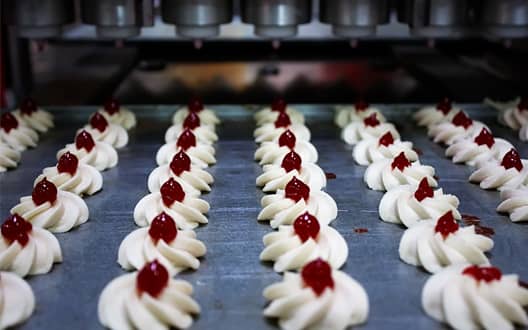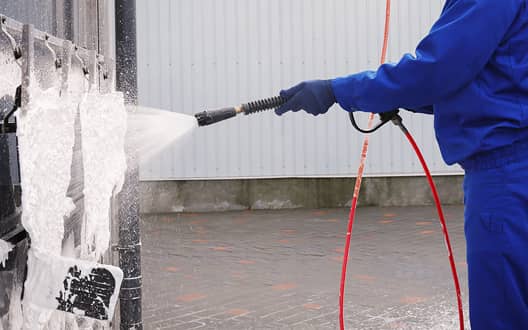Making the right choice – the top 8 things to consider when specifying a controlled flow pump
There are several things to consider before determining which type of controlled flow pump is right for your application. Below we’ve outlined some of the top ones, however you should always consult your solutions provider if you are unsure about the specifications needed to support and optimize your application.
1. Intended Use
The first step in selecting the right controlled flow pump is to consider its intended use. Will you be pumping, transferring, boosting or spraying? Some pumps are better suited for some of these uses versus others.
2. What You Are Pumping
It is essential to get all the details, including the exact composition, temperatures and the concentration of what will be pumped. This information helps you choose the material of construction for the pumps to ensure chemical compatibility, particularly as corrosion can cause leakage and failure. Soak testing the materials is strongly recommended before applying the pump. Additionally, your solutions provider will be able to advise on the chemical compatibility of any given pump.
3. The Viscosity of What You Are Pumping
Viscosity is the internal property of fluid that offers a resistance to flow as it is placed under sheer or extensional stress. In general, it is the measure of the thickness of the fluid or of the fluid friction when trying to flow. For example, water is considered thin – it has low viscosity and can be pumped at higher volumes and speeds in positive displacement pumps. Oils are higher in viscosity and, therefore, the pump used or the volumes or pressures possible are lower. Apart from the type of liquid, many other factors can either reduce or increase the effect of a viscous fluid. Pump orientation, pump speed, port size, system pipe work dimensions and length can all have an effect.
It is worth noting that viscosity in fluid is also highly temperature dependent. For better pumping, high viscosity fluids can be pumped with certain agitation of the material. Agitation could be as simple as a slight stirring or heating of the medium, but care should be exercised if attempting to alter the viscosity for pumping. Each product to be transferred needs to be considered on its own design characteristics to agitation.

4. Required Flow
Flow is defined as the rate at which you want the liquid pumped. Several factors dictate the specific flow requirements in any given application, including your intended use. Some of these factors include the size of the nozzle for spraying, the optimal cycle time for transferring liquid, and the volume of liquid required per cycle for dispensing applications. If the application is compatible with a range of flow rates, it is always advisable to choose a lower flow rate to increase the life span and reliability of the pump.
5. Head or Pressure to Determine Pump Power
Head or pressure, in combination with the flow rate, determines the pump power needed for a given application. This is a simple calculation in cases where the discharge is at a higher level than suction and is determined by the differential height between the liquid level on the suction and discharge sides. The pressure needed may also be controlled by the flow required through a nozzle, or other restrictions in the delivery line such as a long or narrow tube. It’s the frictional loss through the tube and the fitting that dictates the pressure required at a certain flow. The required pressure also includes difference in the pressure of the suction and the discharge vessel when pumping into a higher-pressured vessel or from a vacuum. As always when pumping at pressure, make sure you choose a pump for the pressure needed in the system.
6. How to Control the Pump
What turns the pump on and off is an important consideration since running the pump longer than required reduces pump life. For applications where there is a closed valve or a spray wand with a trigger, it is advisable to use a demand pump with a pressure switch to shut the pump off when the valve is closed. Running a positive displacement pump against a dead head could cause immediate failure. For other applications, it is useful to have a bypass system to prevent failure. More complicated pump controls may involve sensors and electronics.

7. The Pump Driver Needed
The decision to choose the right driving source is generally dictated by availability. If the pump is to be motor or solenoid driven, you will need to know the voltage and the frequency of the power source. AC or DC governs the kind of motor needed. The oscillating pumps that run on the cycling of the AC supply cannot work with DC voltages. If you have air available and choose an air driven pump, you need to know the pressure and means of regulating the incoming air to the pumps. In flammable atmospheres, it is recommended that properly grounded air driven pumps are used to prevent the potential of explosion.
8. Where the Pump is Situated in Relation to the Liquid Level
A pump always needs to be primed when it is located above the level of the liquid to be pumped, or where a flooded suction cannot be provided. Most positive displacement pumps can self-prime as long as you stay within the limit of its priming capability. If that limit is exceeded, the pump will not prime and, hence, will not pump. This will lead to a condition where the pump runs without any liquid. This dry running will lead to early failure of the pump if it happens frequently and over extended periods of time.
Again, these are just some of the things to consider when specifying a pump. Other important considerations, such as the duty cycle, plumbing and ambient temperature all have a direct bearing on the performance of a pump. We recommend that you always consult your solutions provider to help ensure that you’re selecting the optimal pump for your needed application or use.
As the market leaders in controlled flow pumping technology, Jabsco, Flojet, and Rule bring the highest level of reliability, precision, and control to a wide range of critical applications. Backed by Xylem, these trusted brands come with the technical expertise and custom engineering that manufacturers need to drive innovation, grow market share, and meet the needs of end users. Whether you have a question, want to get a quote or just want to provide feedback, we’re here to help and listen. Contact us today.

